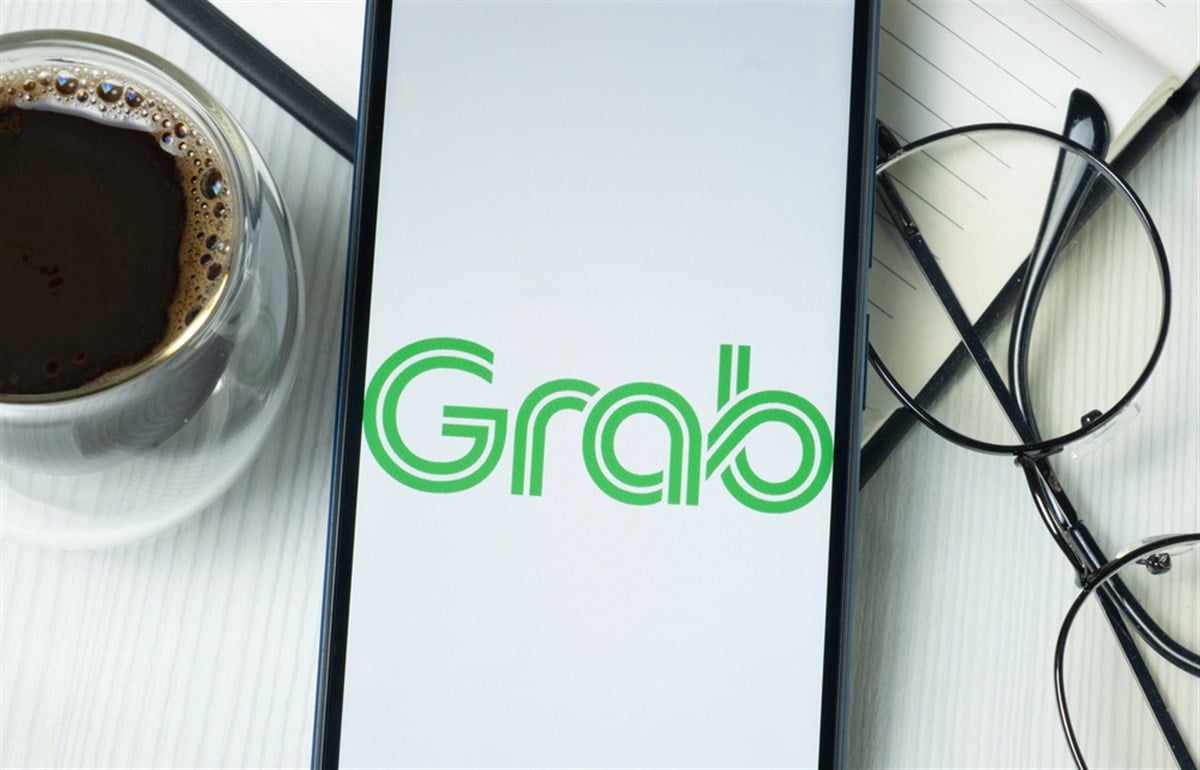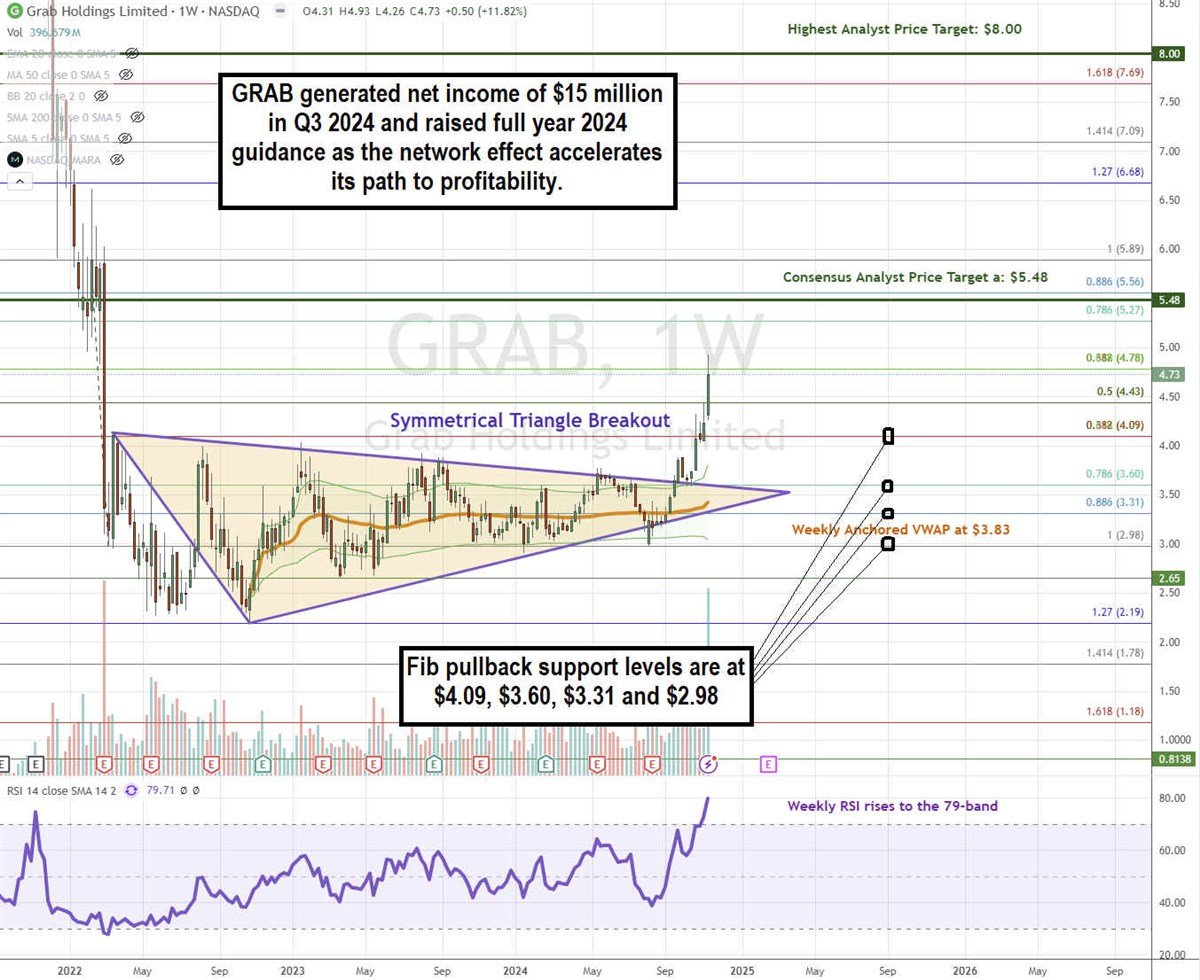 Grab Holdings Ltd. (NASDAQ: GRAB) operates an all-in-one mobile super app in Southeast Asia that enables consumers to access rideshare/ride-hailing, food/grocery/package delivery, hotel booking, and financial services. The Grab ecosystem currently operates in eight countries: Cambodia, Indonesia, Myanmar, Singapore, Thailand, Vietnam, and Malaysia.
Grab Holdings Ltd. (NASDAQ: GRAB) operates an all-in-one mobile super app in Southeast Asia that enables consumers to access rideshare/ride-hailing, food/grocery/package delivery, hotel booking, and financial services. The Grab ecosystem currently operates in eight countries: Cambodia, Indonesia, Myanmar, Singapore, Thailand, Vietnam, and Malaysia.
In March 2018, Uber Technologies Inc. (NYSE: UBER) decided to exit the rideshare business in Southeast Asia and sold its operations there to Grab Holdings. In exchange, Uber received a 27.5% stake in Grab and a board seat for Uber CEO Dara Khosrowshahi. The business services sector company has since been growing its services and revenue, recently turning profitable
Here are four reasons you should grab shares of Grab Holdings before year’s end.
1. Grab Finally Posted a Net Profit in Q3 2024
Grab reported Q3 2024 EPS of a penny, which was two cents better than consensus estimates for a loss of a penny. Revenues rose 17% year-over-year (YoY) to $716 million, firmly beating the consensus estimate of $696 million. On-demand gross merchandise value (GMV) grew 15% YoY to $4.7 billion.
The company reported net profits of $15 million and adjusted EBITDA hit an all-time high of $90 million. The $15 million net profit was a steep turnaround from the loss of $99 million in the year-ago period. However, the net income was greatly helped by an $87 million net benefit in net finance income. Stock-based compensation was $53 million. Monthly transacting users (MTU) rose to 42 million in the quarter. This was the first quarter that Grab recorded a net profit, marking a significant turnaround.
2. Grab Excels at Using the Network Effect to Cross-Sell Services
The network effect is a situation where a product or service becomes more valuable as more people use it. It often starts with a core service or product as a foundation and then adds new services, introducing them to existing users to draw more users so forth. Grab originally started as a ride-sharing platform with ride-hailing as its core service. As more riders used the service, more drivers joined the network.
From there, Grab built out its ecosystem by adding food delivery (GrabFood), grocery delivery (GrabMart), package delivery (GrabExpress), payment processing (GrabPay), and financial services like (GrabFin) for payment, buy-now-pay-later, lending and insurance products. It also offers GrabRewards points for every transaction with the GrabPay Wallet, which further incentivizes the network effect as one in 20 people in the Southeast Asia region currently use the Grab super app. While Grab has grown its MTUs to 42 million users in Q3, that only represents just 15% of the total addressable market (TAM). GrabFood and GrabMart active users were shown to have 5x more order frequency and 2x retention rate than single service users.
3. Grab Raised Its Full-Year 2024 Guidance
With the network effect driving growth, Grab went ahead and raised its full-year 2024 revenue guidance to a range of $2.76 billion to $2.78 billion, up from its previous forecast of $2.70 billion to $2.75 billion, aligning with the consensus estimate of $2.76 billion. Full year adjusted EBITDA is expected between $308 million and $313 million, up from $250 million to $270 million. Adjusted free cash flow is positive for 2024.
The Grab Super app is a one-stop unified platform, providing access to transportation, food, and financial services. The company had $2.5 billion in cash at the end of the quarter and $5.8 billion in net cash liquidity, up from $5.3 billion at the end of the prior quarter.
4. GRAB Stock Triggered a Weekly Symmetrical Triangle Breakout
A symmetrical triangle is comprised of a descending upper trendline resistance converging with an ascending lower trendline support at the apex point. A breakout triggers when the stock surges up through the upper trendline. A breakdown triggers when the stock collapses under the ascending lower trendline support.

GRAB formed its weekly symmetrical triangle from the $4.09 swing high in March 2022 and the $2.19 swing low in October 2022. The channel continued to narrow as it neared the apex point. GRAB broke out in September 2024 through the $3.60 Fib and upper trendline resistance. The weekly anchored VWAP support is at $3.83. The weekly RSI surged up through the 70-band, rising to the 79-band, powering the breakout. Fibonacci (Fib) pullback support levels are at $4.09, $3.60, $3.31 and $2.98.
GRAB’s average consensus price target is $5.48, and its highest analyst price target sits at $8.00. It has nine analysts' Buy ratings. The stock has a 2.52% short interest.
Actionable Options Strategies
Bullish investors can consider using cash-secured puts to buy GRAB at the Fib pullback support levels or consider buying LEAPS at Fib extension levels to capture the upside without deploying the full capital of owning the stock. If the LEAPS are deep in the money (ITM), then selling front-month out-of-the-money calls activates a Poor Man’s Covered Call strategy to generate income.













